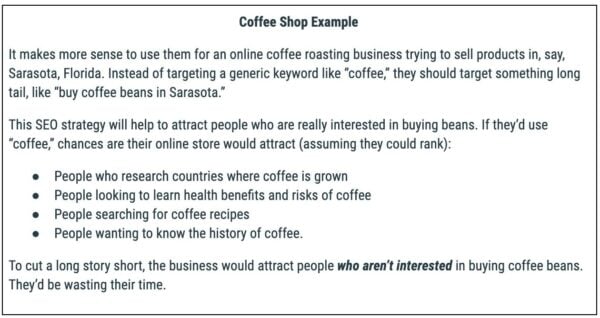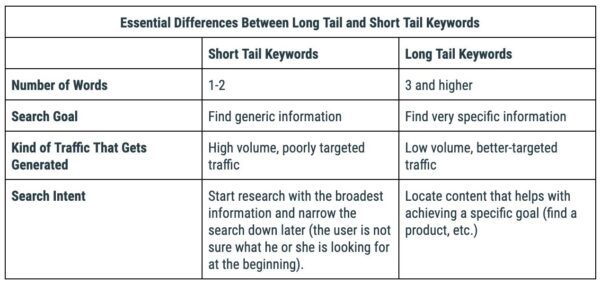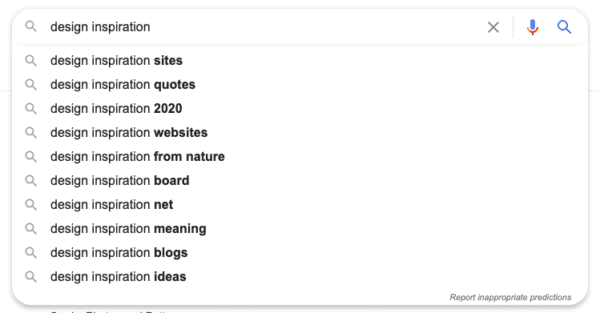So, you’ve decided to find high-converting keywords for your website.
This is a must to ensure a reasonable position in Google results and drive a good amount of potential customers towards your business.
While researching, you discovered two types of keywords you need to use: short tail and long tail. Both seem to be important for SEO and need to be included in your strategy.
Besides, you’re really not supposed to over-optimize your content through excessive keyword usage. Does that mean you need to focus on one group of keywords?
In this guide, we’re going to compare short tail and long tail keywords so you know how to use them for the best possible SEO results.
Here are the most important points I’ll cover:
- Short tail and long tail keywords: what are they?
- Short tail keywords
- Long tail keywords
- The difference between long tail and short tail keywords in SEO
- User intent for short tail keyword search
- User intent for long tail keyword search
- How to find short tail and long tail keywords for SEO optimization
- How to choose short tail keywords.
- How to choose long tail keywords.
By the time you’re done reading, you’ll know the difference between these keyword types and how to use them to get higher in SERP.
Short Tail and Long Tail Keywords: What Are They?
First and foremost, let’s make sure you understand these two groups of keywords so you can use them to your advantage.
Short Tail Keywords
Short tail keywords are general search queries consisting of one or two words.
Sometimes called “head terms,” they describe highly broad searches for information, e.g. “marketing,” “smartphones,” “fast food,” “running shoes,” and “buy laptops.”
Short tail keywords, as you can see, are very generic in nature. They describe only a certain category of knowledge, so they attract high search volumes.
For example, the short tail keyword “Laptops” generates a ridiculously high amount of results.

Why so many? Because it’s very, very generic. Google simply can’t identify your search intent, so it generates a whole lot of results.
Most of them, however, are likely to be irrelevant, so the conversion rates for short tail keywords can be low.
Dive Deeper:
Long Tail Keywords
Long tail keywords are more specific, longer keyword phrases containing three and more words. For example, a short tail keyword “laptops” becomes “affordable laptops for students Australia” in a long tail version.
These keywords attract a lower amount of search results because they’re more detailed and better targeted.

Fewer keywords lead to a higher conversion rate for those targeting them. The explanation is simple: less competition.
That’s why about 70 percent of all web searches consist of long tail keywords.

Dive Deeper:
Now, the picture becomes a little clearer, right? Let’s now talk about the difference between these types of keywords in more detail.
Difference Between Long Tail and Short Tail Keywords in SEO
As you’ve realized already, there are a few significant differences between these types of keywords.
Let’s summarize the basic differences we’ve learned so far.

So, short tail keywords generate a lot of traffic and high competition. Long tail ones, on the other hand, attract less traffic and less competition.
“Using both types is typically recommended for SEO,” says Jules Duncan, head of the content team at Studicus. “But if one doesn’t understand the difference between them, one can’t optimize their website the right way.”
The most important difference between them is a critical ranking factor: user intent. Putting yourself in a Google user’s shoes might help to understand this factor and choose the best keywords.
Dive Deeper:
Difference Between Long Tail and Short Tail Keywords: User Intent
In this section, let’s illustrate the difference by using an example of an average Google user.
User Intent for Short Tail Keyword Search
Picture Tom.
He’s a business owner who lives in Boston. He’s looking to create a new website for their company.
Tom’s an entrepreneur, not a website developer, but he likes cool designs and wants to be involved in the website design process. According to him, the website should represent the brand personality and look modern and easy to use.
To find some ideas, Tom takes his laptop and searches for “website ideas” and “website designs.” Both are short tail keywords, so Google finds websites of web development firms, SEO agencies, website builder tools, and freelance platforms offering web design services.
He visits a few and leaves them pretty quickly after finding some design ideas. He saves them and shares with his business partner later and closes the laptop. Suddenly, his phone rings and reminds him of an upcoming business meeting.
He accomplished his task: finding website design ideas.
“That’s how most Google users find information,” says Claire Etkins, a digital marketing specialist from TrustMyPaper. “They start with generic terms, and understanding why they do so is critical for optimizing content.”
User Intent for Long Tail Keyword Search
While Tom was at a meeting, his business partner reviewed the ideas he received from him. He thinks that some examples are better than others but couldn’t really make a choice.
That’s why he decided that they should contact a web design agency and ask them if they can create something similar. Plus, they can help with doing ecommerce SEO.
Tom agrees. He adds that their ecommerce shop needs to target Millennials, so the design should be fresh and visually appealing.
So, Tom goes back to search. This time, however, his search is different. Instead of “website designs,” he looks for “web developer in Boston.”
See the difference between Tom’s first and second searches?
The second time, he doesn’t want generic content and website inspiration. He needs to find a business (a web design agency) to help him with a specific task (ecommerce website development) in a specific location (Boston).
User Intent: Takeaway
If you choose keywords that match the search intent (amongst other factors) of a Google user like Tom, your website has a great chance to rank.
- User Intent (Short Tail Keywords): Tom wasn’t looking to buy anything. He just needed some website design inspiration – low chance of conversion
- User Intent (Long Tail Keywords): Tom looked for web design agencies to get help with website development – high chance of conversion.
The choice of keywords, therefore, can make a huge difference for your business. It depends on your goals and your target visitor’s needs.
Dive Deeper:
How to Find Short Tail and Long Tail Keywords
Let’s now find how to choose short and long tail keywords for proper SEO optimization.
How to Choose Short Tail Keywords
If you need to find short tail keywords to optimize your website, take the following steps.
- Think of keywords that represent your website, content, goal, or benefit for Google users. If you’re a website containing design inspiration, you can go for keywords like “website designs,” “website ideas,” “website inspiration,” and so on
- Use tools like Google Keyword Planner. If you have experience doing keyword research, you can use this great tool to find some ideas.
How to Choose Long Tail Keywords
Here are some of the best ways to find long tail keywords that bring traffic:
- Google search. Start a simple search by typing a short tail keyword in Google’s search bar. It’ll give you recommendations based on the history of searches
 You do a search like this every day, so you’ll figure it out.
You do a search like this every day, so you’ll figure it out.
- Use the Related Searches section on Google. You’ve seen this a million times, too. It has great examples of long tail keywords based on your search, as recommended by Google users

- Use keywordtool.io. This is a keyword research tool used to automatically generate long tail keyword combinations based on the short tail keyword of your choice.
- Use the Related Searches section on Google. You’ve seen this a million times, too. It has great examples of long tail keywords based on your search, as recommended by Google users
These keyword research techniques are good for showing the essentials of proper optimization. The professional process of SEO optimization may take a lot of time, so having an SEO agency helping is an option that many online businesses take.
Dive Deeper:
Short Tail vs Long Tail Keywords: The Bottom Line
Here you go, now you know how short tail keywords differ from long tail ones and how to find, and use them to get more traffic from Google.
There’s only one question left: which is the best way to go?
The obvious answer is both.
This is the best way to attract the most traffic. Besides, Google has probably ranked your website for both short and long tail keywords, so start from there.
About the Author: Kristin Savage nourishes, sparks, and empowers using the magic of a word. Along with pursuing her degree in creative writing, Kristin was gaining experience in the publishing industry, with expertise in marketing strategy for publishers and authors. Now she works as a freelance writer at GrabMyEssay.



